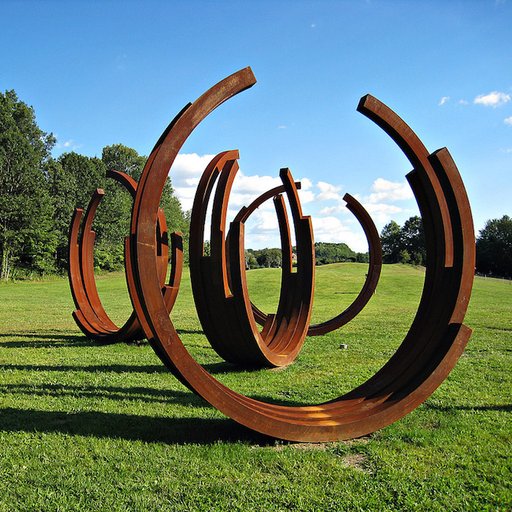Alison Knowles and Rirkrit Tiravanija
A founding member of the avant-garde group Fluxus, Alison Knowles creates works across a variety of media, from silkscreens to books to soundwork. Informed by the sculptural qualities of books, Loose Pages (1983) replaces the spine of a book with that of a human, while pages fill the rest of the body. Knowles's Identical Lunch (1969) featured the artist performing her lunch routine, codified into a score, presenting a thoughtful meditation on the everyday. Knowles has exhibited her work at numerous institutions, including the Museum of Modern Art and the Tate Modern, and has received multiple awards and fellowships, including the Guggenheim Fellowship.
Guided by an interest in the societal role of the artist, Rirkrit Tiravanija creates works that seek to draw viewers together. In his series pad thai (1990), the artist cooked and served a traditional Thai meal for all gallery visitors. In Untitled 1999, he constructed a replica of his East Village apartment, inviting visitors to use the space however they wanted—a group of students moved in during the length of the exhibition. Tiravanija has exhibited his work at the Venice Biennale and the Whitney Biennial and has seen his art shown at numerous institutions, including the …
A founding member of the avant-garde group Fluxus, Alison Knowles creates works across a variety of media, from silkscreens to books to soundwork. Informed by the sculptural qualities of books, Loose Pages (1983) replaces the spine of a book with that of a human, while pages fill the rest of the body. Knowles's Identical Lunch (1969) featured the artist performing her lunch routine, codified into a score, presenting a thoughtful meditation on the everyday. Knowles has exhibited her work at numerous institutions, including the Museum of Modern Art and the Tate Modern, and has received multiple awards and fellowships, including the Guggenheim Fellowship.
Guided by an interest in the societal role of the artist, Rirkrit Tiravanija creates works that seek to draw viewers together. In his series pad thai (1990), the artist cooked and served a traditional Thai meal for all gallery visitors. In Untitled 1999, he constructed a replica of his East Village apartment, inviting visitors to use the space however they wanted—a group of students moved in during the length of the exhibition. Tiravanija has exhibited his work at the Venice Biennale and the Whitney Biennial and has seen his art shown at numerous institutions, including the Center for Contemporary Art in Japan and the Museum of Modern Art.
BFA, Pratt Institute, New York, NY, 1956
Tiravanija:
Whitney Independent Studies Program, New York, NY, 1986
School of the Art Institute of Chicago, Chicago, IL, 1986
Ontario College of Art in Toronto, Ontario, Toronto, 1984
Banff Center School of Fine Arts, Alberta, Canada, 1984





